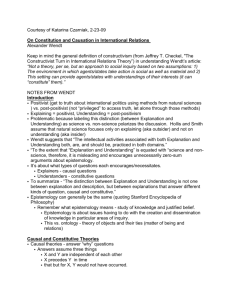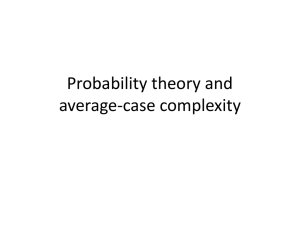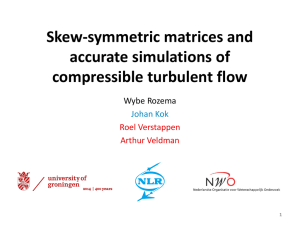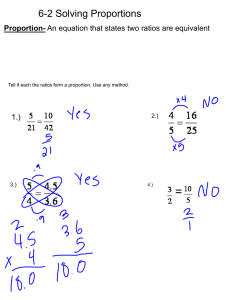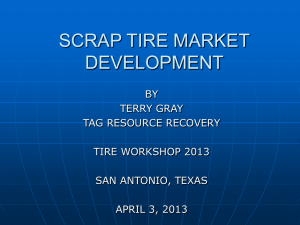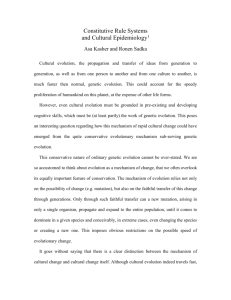A. Suwannachit and U. Nackenhorst 5 /14
advertisement
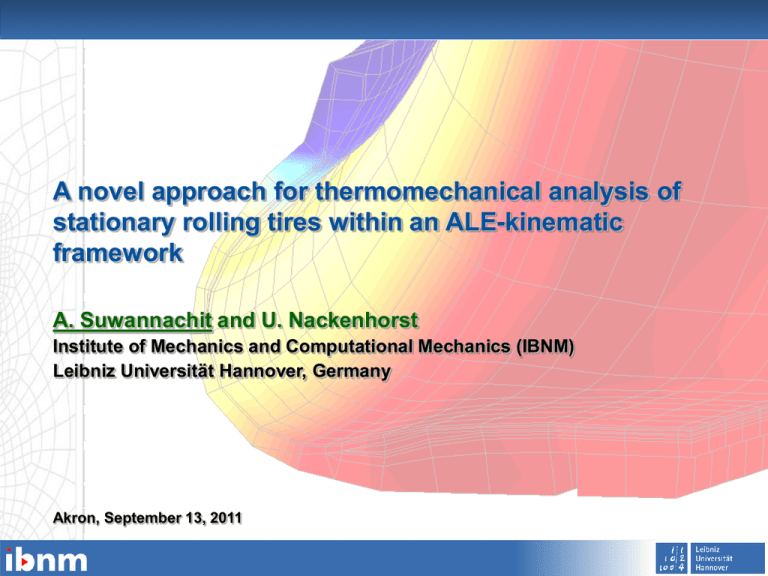
A. Suwannachit and U. Nackenhorst A novel approach for thermomechanical analysis of stationary rolling tires within an ALE-kinematic framework A. Suwannachit and U. Nackenhorst Institute of Mechanics and Computational Mechanics (IBNM) Leibniz Universität Hannover, Germany Akron, September 13, 2011 1/14 A. Suwannachit and U. Nackenhorst Contents Motivation & Goal Thermoviscoelastic constitutive model Isentropic operator-split scheme ALE-relative kinematics & treatment of inelastic properties Solution strategy for thermomechanical analysis Numerical examples Conclusion & Outlook 2/14 A. Suwannachit and U. Nackenhorst 3/14 Motivation Conventional approach for thermomechanical analysis of rolling tires from [Whicker et al., 1981] temperature distribution Deformation module deformed geometry Tires are assumed to be elastic ! thermoviscoelastic Dissipation module energy dissipation Empirical models Linear viscoelasticity Thermal module Large deformations or complicated properties like damage etc.? Goal Description of dissipative rolling behavior with constitutive model at finite-strain Energy loss derived from 2nd law of thermodynamics Special care on constitutive description of rubber components (large deformations, viscous hysteresis, dynamic stiffening, internal heating, temperature dependency) A. Suwannachit and U. Nackenhorst 4/14 Thermoviscoelastic constitutive model Helmholtz free energy function [Simo&Holzapfel, 1996] : right Cauchy Green tensor : absolute temperature thermoelasticy rate-dependent response : strain-like internal variables Uncoupled kinematics (volumetric-isochoric split) Evolution law of internal variables shear modulus viscosity A. Suwannachit and U. Nackenhorst 5/14 Thermal sensitivity of viscosities and shear moduli [Johlitz et al., 2010] temperature-independent evolution equations ! relaxation time Thermodynamic consistency 2nd law of thermodynamics 2nd Piola-Kirchhoff stress : viscous dissipation : entropy : Fourier’s law of heat conduction : A. Suwannachit and U. Nackenhorst 6/14 Isentropic operator-split scheme A fractional-step approach to solve the coupled thermomechanical problems in two sequential steps [Armero&Simo, 1992] fixed motion fixed entropy, but varying temperature Advantages: • Avoid large non-symmetric tangent operator by simultaneous solution • unconditionally stable solutions A. Suwannachit and U. Nackenhorst Numerical test on constitutive modeling • Pure shear loading conditions • Fixed temperature at bottom • Tube model for time-infinity response Steady-state responses 7/14 f =10Hz A. Suwannachit and U. Nackenhorst 8/14 Arbitrary-Lagrangian-Eulerian (ALE) relative kinematics Mesh points are neither fixed to material particles nor fixed in space Material velocity is split into a relative and convective part =0, in case of stationary rolling Balance equations in time-independent form [Nackenhorst, 2004] centrifugal force internal force impulse flux over boundary external volume and surface loads • Local mesh refinement in contact region • Challenging task: treatment of inelastic material behavior A. Suwannachit and U. Nackenhorst 9/14 Treatment of inelastic properties Problem: evolution law of internal variables is affected by convective terms Solution: a separate treatment of relative and convective terms [Ziefle&Nackenhorst, 2008] Lagrange-step: • Neglect convective parts • Solve equilibrium equations in Lagrangian kinematics Euler-step: • Advection-type equations • Solve by using Time Discontinuous Galerkin method A. Suwannachit and U. Nackenhorst 10/14 Solution strategy for thermomechanical analysis A three-phase staggered scheme (neglecting convective part) penalty contact constraint (frictionless) A. Suwannachit and U. Nackenhorst 11/14 ω = 50 rad/s Numerical examples (I) Rolling viscoelastic rubber wheel 13200 DOF constitutive parameters from previous example compute with 5 different angular velocities (ω = 5,10,20,50,100 rad/s) fixed temperature at inner ring Θ=293K no heat exchange with ambient air dynamic stiffening temperature rise depending on excitation frequency ω A. Suwannachit and U. Nackenhorst 12/14 (II) Application with car tires ≈ 45000 DOF 15 material groups in cross-section thermoelastic/thermoviscoelastic material bilinear approach for cords 30mm ω 303K fixed temperature at rim contact 303K outside air 303K, contained air 318K 318K internal pressure ≈ 0.2 MPa rolling speed ≈ 80 km/h vertical displacements 30mm at rim strip 303K Contact pressure distribution Steady-state response (reaction forces ≈ 4.81kN) no rotation (reaction forces ≈ 4.61kN) A. Suwannachit and U. Nackenhorst 13/14 temperature distribution local dissipation ? Internal strains ω radial components circumferential components von Mises stress A. Suwannachit and U. Nackenhorst 14/14 Conclusion Thermoviscoelastic constitutive model (large deformations, viscous hysteresis, dynamic stiffening, internal heating, temperature dependency) Solution of thermomechnical coupled problems with isentropic operator-split scheme Three-phase computational approach for thermomechanical analysis Numerical tests with viscoelastic rolling wheel and car tires Outlook Parameter identification and model validation Frictional heating slip velocities and circumferential contact shear stress [Ziefle&Nackenhorst, 2008]
